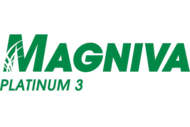As the silage season progresses, and with corn harvesting season quickly approaching, it’s an ideal time to look at how the growing conditions in the U.S. could affect yields and quality at harvest.
Different parts of the U.S. are being affected by different conditions, which is no great surprise given the size of the country. Understanding the silage crop growing conditions can help producers make the best possible silage.
In the northwest, the 2023 silage season is in full swing. Rain meant that haylage cuts were late although yields are looking good. The corn went into the ground later than normal and, at this point, producers are looking at a late harvest season. Corn growth has been somewhat limited by reduced sunlight due to the Canadian wildfires, which caused major environmental issues.
In Texas, flooding caused delays to the wheat harvest, and much of it is now just broom straw. The wheat that was harvested ended up in piles, which were rained on. Even crops that were harvested and covered were hit with hail the size of baseballs, causing massive damage to the covers, and requiring replacement investments. All of this meant that corn was planted over a month late, resulting in a late harvest. Some farmers may grow more sorghum to make up for any shortfalls in corn silage. Corn is looking poor and yellowish now and has suffered significant hail damage. It’s been a tough start to the silage season in Texas!
In the Midwest, harvesting of first crop forage went well if completed by the first week of June. The second crop is looking weaker due to a lack of rain. Corn is very variable. Early planted corn is growing well but later planting is looking poor due to a lack of rain.
The Pacific northeast region around Utah and Idaho suffered a cold and wet spring, which negatively affected the first cut of haylage and triticale. This led to both early and late corn planting. Producers who were not double cropping corn could plant early, but those that had to wait to get triticale off ended up planting late.
California wheat silage season began with a large storm. Some producers lost entire crops due to flooding. Those that didn’t lose all their crop had flood damage to contend with. Wheat harvest was very difficult and, due to rainfall, many producers ensiled wheat at above 40% DM. These moisture levels require an inoculant for adequate fermentation and storage. Early corn is starting to tassel in the fields, and temperatures have been cold enough that pollination did not go as well as expected. Although it is hopeful growing corn will have good looking ears. Late corn is in and is anywhere from an inch to a foot tall. Due to excessive rainfall, more corn is being planted in place of milo and sorghum because water is more available and cheaper this year. It will be interesting to see what the summer weather looks like and how late we can keep a crop in the ground before the predicted El Niño rains start back up again.
In the High Plains, Nebraska, Kansas, and Dakotas: Rye and haylage went well and is all done in Nebraska and South Dakota. Montana and North Dakota are just starting to cut haylage and triticale. The main this part of the season went well. The corn crop looks pretty good, no weather or hail damage at the moment, but much of the corn was between 3 inches to 36 inches. Again, there is a lot of variation due to planting dates. Most of the Great Plains is getting abundant rainfall. However, southeast Nebraska through northern Kansas is extremely dry, and the crops look very tough at this point.
With feed costs still at historic highs, making the best quality silage possible — and maintaining the quantity available until feedout — is vital when trying to maintain on-farm profitability. With the myriad of different crops and silage environmental challenges seen in the U.S., it’s more important than ever to consider a challenge specific silage inoculant such as the MAGNIVA range. Designed specifically to treat a range of challenges seen in different crops, MAGNIVA can help ensure the best possible preservation and, where required, stability. For more information, visit MAGNIVA.COM.






